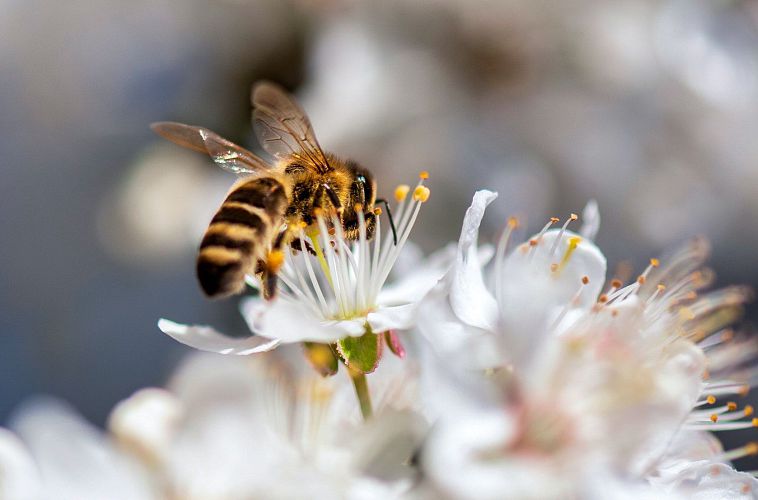BOARD 10 - BEE HOTEL
Visiting the bees
At this station, we visit the bees at home: the honey bees live with their queen in the beehive. For the wild bees and beneficial insects, on the other hand, we have built their own wild bee hotel - where they find very similar structures for nesting as in their natural habitats. Now take a closer look at the homes of the different bee species! Then you will soon be able to build a wild bee hotel yourself - you will find instructions for this in the downloads section of this board!
ON THE TRAIL OF THE BEE
The history of the bee
Bees have been around longer than humans. They could have emerged as early as 90 million years ago, during the time of the dinosaurs. The oldest evidence of bees is preserved in 50 to 100 million-year-old amber. However, these bees probably still fed on other insects.
THE WONDERFUL WORLD OF BEES
Fascinating facts from the beginnings to the present day
- Honey bees pollinate 80% of all wild plants and crops.
- Bees are responsible for a third of our food.
- The bee is our third most important beneficial animal.
- In New Jersey, USA, a bee encased in amber was found estimated to be 90 to 100 million years old.
- An approximately 8,000 to 12,000-year-old cave painting in Valencia, Spain, already shows a man on a meter-high tree sticking his arm into a bee's nest.
- The early beekeepers in Germany were called "Zeidler". The oldest evidence of a Zeidler dates back to the year 748. It was a respected profession. The Zeidler supplied monasteries and aristocrats with candles made from beeswax.
- In the 4th millennium BC, bees were kept in Egypt, and their activities were depicted in hieroglyphs.
- In the 7th century BC, honey bees were kept and used in Anatolia, Turkey.
- The oldest surviving reference to bees was found in Myanmar. The animal found here, encased in amber, probably lived 100 million years ago.
